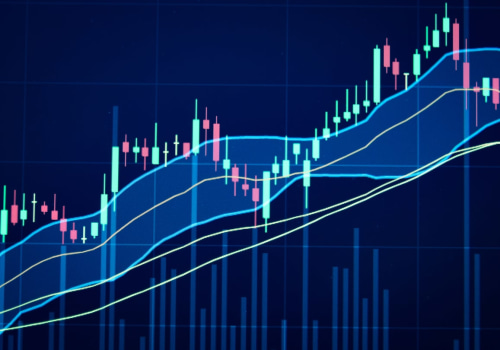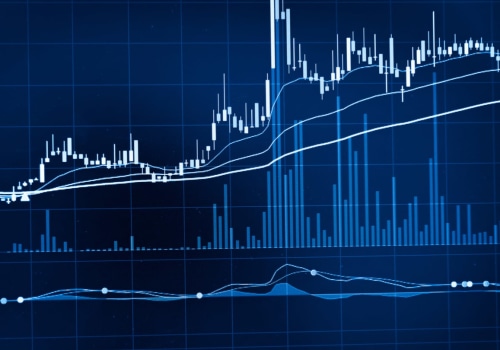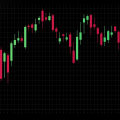Forex trading has gained significant popularity in recent years as more individuals seek to tap into the potential financial opportunities it offers. If you're new to forex trading, you may be wondering how many trading days there are in a year and how this knowledge impacts your trading activities. In this comprehensive guide, we will explore the concept of trading days in a year, factors affecting them, trading strategies, and much more.
1. Introduction
Forex trading, also known as foreign exchange trading, is the act of buying and selling currencies with the aim of making a profit from the fluctuations in their exchange rates. It is a decentralized global market where participants, such as banks, financial institutions, corporations, and individual traders, engage in currency trading. The forex market operates 24 hours a day, five days a week, making it an attractive option for traders worldwide.
2. What is Forex Trading?
Before delving into the specifics of trading days in a year, let's briefly understand the basics of forex trading. In forex trading, traders speculate on the price movements of currency pairs. Each currency pair represents the value of one currency relative to another. For example, the EUR/USD pair represents the euro's value relative to the US dollar.
Traders aim to profit from these price fluctuations by buying a currency pair when they anticipate its value will increase and selling it when they expect it to decrease. The difference between the buy and sell price is known as the spread, which acts as a transaction cost for traders.
3. Understanding Trading Days in a Year
In the context of forex trading, trading days refer to the days when the forex market is open for trading. Unlike traditional stock markets that operate on specific hours, the forex market is open 24 hours a day, excluding weekends. This continuous trading allows traders from different time zones to participate at any time convenient to them.
While the forex market operates 24/5, it doesn't mean that traders have an equal number of trading days throughout the year. Various factors influence the number of trading days, including weekends, holidays, and market closures.
Calculation of Forex Trading Days
To determine the number of forex trading days in a year, we need to consider various factors. While the forex market operates for 24 hours a day, it is important to note that not all hours are equally active. The forex market experiences periods of high volatility and liquidity, which are influenced by the opening and closing times of major financial centers around the world.
The main forex trading sessions are:
Asian Session: This session starts with the opening of the Tokyo market and includes trading activity in countries such as Japan, Australia, and New Zealand.
European Session: The European session begins with the opening of major financial centers in Europe, including London, Frankfurt, and Zurich.
North American Session: This session commences with the opening of the New York market and encompasses trading in the United States and Canada.
Factors Affecting Forex Trading Days
Several factors affect the number of forex trading days in a year. These include:
Public Holidays: Forex trading is influenced by public holidays observed in different countries. On these days, trading activity may be limited or completely halted, impacting the overall number of trading days.
Weekends: While the forex market operates 24/5, it remains closed on weekends. Therefore, Saturdays and Sundays are not counted as trading days.
Regional Observances: Regional events, such as local holidays or celebrations, can also impact trading activity. For example, during major festivals or events in specific countries, trading volumes may decrease.
Considering these factors, the average number of forex trading days in a year is approximately 252. However, it is important to note that this number may vary depending on the specific year and the occurrence of public holidays and regional observances.
4. How Many Trading Days in a Year?
The number of trading days in a year depends on the calendar and the specific market being considered. In general, the forex market is closed on weekends (Saturday and Sunday) in most parts of the world. This means that traders have approximately 250-253 trading days in a year, considering the average number of weekdays.
However, it's essential to note that different countries and regions have their own public holidays, which can further affect the number of trading days. Major holidays, such as Christmas and New Year, often result in reduced liquidity and trading activity.
5. Factors Affecting Trading Days
Several factors can impact the number of trading days in a year. These factors include:
a. Public Holidays
Public holidays, observed by different countries and regions, can lead to market closures. During these holidays, trading activity is minimal, and liquidity may be lower than usual. It's crucial for forex traders to stay aware of the public holidays in their respective trading regions.
b. Bank Holidays
Bank holidays, specific to the countries where major financial institutions are located, can affect forex trading. Banks play a significant role in the forex market, and their closure can impact liquidity and trading volumes.
c. Time Zones
Forex trading is a global market, and traders from different time zones participate actively. The trading day begins in one part of the world and overlaps with other sessions. The varying time zones can affect the number of trading days as traders operate based on their local market hours.
d. Market Closures
In rare cases, unforeseen events or emergencies can lead to temporary market closures. These closures can be due to natural disasters, technical glitches, or other extraordinary circumstances.
The Importance of Forex Trading Days
Understanding the number of forex trading days in a year is crucial for traders. Here's why:
Maximizing Trading Opportunities: Knowing the number of trading days allows traders to effectively plan their trading strategies. By identifying the active trading sessions, traders can focus on the periods with the highest liquidity and volatility, increasing their chances of making profitable trades.
Avoiding Trading Pitfalls: Being aware of public holidays and regional observances helps traders avoid potential pitfalls. It allows them to plan their trading activities accordingly and adapt their strategies to account for reduced market participation during these times.
Risk Management: The number of trading days plays a crucial role in risk management. Traders can set limits on their exposure to the market and adjust their positions based on the anticipated trading days. This helps minimize potential losses and maintain a disciplined approach to trading.
Conclusion
In conclusion, the number of forex trading days in a year typically ranges between 250-253, considering weekends and average weekdays. However, this number can be influenced by public holidays, bank holidays, time zones, and occasional market closures. As a forex trader, it's important to stay informed about these factors and plan your trading activities accordingly.
Forex trading offers ample opportunities for those who understand the market dynamics, employ effective strategies, and manage risks appropriately. By continually educating yourself, practicing disciplined trading habits, and staying updated on the latest market developments, you can navigate the forex market with confidence.
Remember, successful trading requires patience, perseverance, and continuous learning. Embrace the ever-evolving nature of the forex market, and you'll be on your way to becoming a proficient forex trader.
1. Can I trade forex on weekends?
No, the forex market is closed on weekends. Trading activities are limited to weekdays.
2. Do public holidays impact forex trading?
Yes, public holidays observed in different countries can impact forex trading. On these days, trading activity may be limited or completely halted.
3. Are all forex trading days equally active?
No, the forex market experiences periods of high volatility and liquidity based on the opening and closing times of major financial centers around the world.
4. How many forex trading days are there in a year?
On average, there are approximately 252 forex trading days in a year, considering weekends and public holidays.
5. Why is it important to know the number of forex trading days?
Knowing the number of trading days helps traders plan their strategies, avoid potential pitfalls, and effectively manage risk, maximizing their chances of success in the forex market.
By incorporating these insights into your trading approach, you can navigate the forex market more effectively and make informed decisions to achieve your financial goals.
Remember, successful trading requires continuous learning and adaptability. Stay updated with the latest market trends and refine your strategies accordingly. Happy trading!












Leave Reply